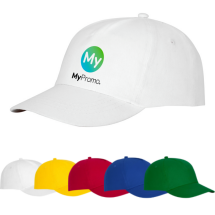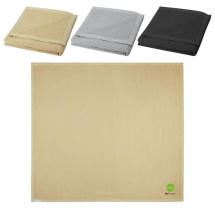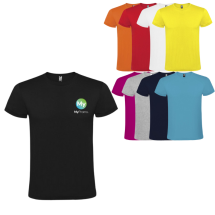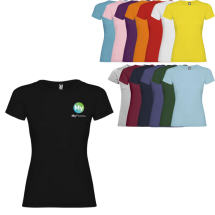Cotton
What is Cotton?
Cotton is a natural fiber that holds a significant place in the manufacturing world, especially noted for its role in clothing, home décor, and promotional gifts. As a fundamental resource, cotton's versatility and comfort make it a preferred choice in various industries. Cotton is derived from the fluffy fibers of the cotton plant, which are primarily grown in regions that favor warm climates and plenty of sunshine.The journey of cotton begins long before it reaches the factory, with its cultivation dating back thousands of years. Historical records suggest that cotton was used in fabric making in India and Pakistan around 6000 B.C. From there, it spread globally, becoming a staple in the textile industries of many countries. Its proliferation was furthered by the invention of the cotton gin in the late 18th century, which significantly eased the process of separating cotton fibers from seeds.
To produce cotton, the process starts with planting cotton seeds in fertile, sunlit fields. After growth and maturation, the cotton bolls are harvested. Next, the raw cotton is cleaned to remove seeds and impurities, a step essential for ensuring quality. The clean fiber is then spun into yarn and later woven or knitted into fabric. This fabric can then be dyed, printed on, and finished into various products.
Key Properties and Characteristics of Cotton
Cotton is celebrated for its breathability, softness, and high absorbency, making it exceptionally comfortable to wear in a variety of climates. It is also prized for its hypoallergenic nature and durability, often becoming softer with subsequent washes. These attributes make cotton an indispensable material in the production of everyday items and crucial promotional materials.
Cotton in Everyday Use and Promotional Gifts
From fashionable apparel and plush towels to artisan quilts and cozy bed linens, cotton’s applications are diverse. In the realm of promotional gifts, cotton proves equally versatile. Personalized cotton clothing, personalized hats, and tote bags are popular choices for companies aiming to leave a lasting impression. Cotton’s ease of dyeing and printing allows for high-quality and vibrant customizations that are essential for promotional activities.
Advantages of Cotton in Manufacturing
The benefits of using cotton are manifold. Its natural origins mean it is biodegradable, making it a sustainable choice in an eco-conscious market. The strength and ease of handling in various textile processes also allow manufacturers to maintain high efficiency while ensuring product quality.
Comparing Cotton with Synthetic Fibers
While cotton stands out for its natural comfort and sustainability, synthetic fibers like polyester offer benefits like increased durability and moisture-wicking properties. However, cotton remains superior in terms of skin-friendliness and environmental impact. The challenge with cotton involves its water-intensive cultivation and susceptibility to weather changes, which can affect production rates and costs.
In summary, cotton’s natural qualities and extensive history in textiles make it an enduring favorite in both traditional fabric manufacturing and modern promotional industries. Its ability to blend classic appeal with contemporary needs ensures that cotton will remain a staple material for many years to come. Whether for apparel, home décor, or promotional gifts, cotton offers a reliable, comfortable, and sustainable option that many other materials find hard to match.
| Property | Description | Applications |
|---|---|---|
| Breathability | Allows air circulation, reduces sweating | Fashionable apparel, bed linens |
| High Absorbency | Absorbs moisture well | Towels, sportswear |
| Hypoallergenic | Minimizes allergic reactions | Baby clothing, hypoallergenic bedding |
| Durability | Becomes softer with washes, long-lasting | Jeans, work clothes |
| Ease of Dyeing | Can be dyed and printed easily | Customized promotional items |
What is cotton?
Cotton is a natural fiber that comes from the cotton plant. It is primarily used in the textile industry to make soft, breathable fabrics. The fiber is harvested from the cotton plant’s seed pod, or boll, and then processed and spun into yarn.
How is cotton harvested?
Cotton can be harvested by hand or by machine. Hand-picking ensures higher quality because it reduces the mixing of mature and immature fibers, but it is labor-intensive. Machine harvesting is faster and more economical, although it may include more debris and require additional cleaning.
What are the environmental impacts of growing cotton?
Cotton farming can be water-intensive and often requires substantial use of pesticides and fertilizers, which can lead to environmental degradation such as soil depletion and water pollution. However, organic and more sustainable methods of cotton farming are being developed and utilized to reduce these impacts.
What makes cotton popular in the textile industry?
Cotton is favored for its softness, breathability, and absorbency, making it extremely comfortable to wear. It's also versatile and can be blended with other fibers. Additionally, cotton is durable and becomes softer with each wash, making it ideal for a wide range of applications, from everyday clothing to luxury bed linens.
Can cotton be recycled?
Cotton can be recycled, reducing waste and the demand for virgin cotton fibers. Recycled cotton is often sourced from pre-consumer waste, like cutting scraps from textile factories, or post-consumer waste, such as used garments. This recycled cotton can be used for making new textiles, although it may sometimes be blended with other fibers to enhance strength.











